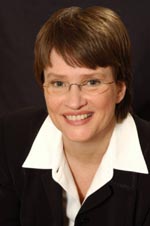
The voice-ear-brain connection validated by the French Academy of Science in 1957, was a result of the work and research of Dr. Alfred Tomatis. Dr. Tomatis developed the Tomatis Method, a listening stimulation program that has demonstrated change for individuals whose voice-ear-brain connection is not working efficiently.
Children diagnosed with autism often have issues with processing sound, that in turn affects their ability to learn language, communicate effectively, interact socially, maintain appropriate sensory stimulation levels, integrate appropriate thinking and learning skills, and control appropriate emotional reactions. The ability to process sound and the development of language and these skills are intrinsically connected. What happens when one’s ability to process sound is deprived, altered, or disrupted? The development of speech, language, motor development, communication, vestibular function, and proprioception is impacted. As a result, the voice-ear-brain connection is deprived and development does not occur as nature intended. Auditory Processing issues often go undetected, yet they are frequently the root cause of many symptoms displayed by Autistic children.
Auditory deprivation is a result of the body not receiving the necessary sound stimulation to enhance the connective networks between the voice, the ear, the brain, and the rest of the body. This deprivation may be a result of middle ear infections, environmental issues, physical problems and more. The results are often seen as hypersensitivities to sensory input (especially auditory, ie. covering ears), stilted learning skills, disconnected speech, difficulty listening in background noise, auditory processing timing lags, weak auditory discrimination skills, difficulty localizing sound, emotional instability, attention and focus weaknesses, and vestibular and balance disorders.
If hearing and listening skills are not functioning well, the individual may want to be isolated when there is too much sound, will avoid noisy situations, have difficulty listening in background noise, avoid talking to others, appear over anxious, and have diminished language skills. What is most important is to determine if the breakdown is with hearing, or listening, or both. The next step is to determine if a Sound Therapy can help. If so, choosing the appropriate sound therapy will establish the foundation for the changes needed to improve the processing function.
There are many Sound Based Therapies available today. They are NOT the same and should not be lumped into one category. Sound Based Therapies, following the appropriate protocol, will achieve positive changes. An overview of the therapies will review what they do anatomically and physiologically. Parents will learn the differences between the therapies and how to determine if Sound Based Therapy can help their autistic child.
BIBLIOGRAPHY
Bellis, Teri James, Central Auditory Processing Disorders in the Educational Setting:
From Science to Practice, Singular Publishing Group, Inc., San Diego,
CA,1998
Campbell, Don, The Mozart Effect, Avon Books, Inc, NY, 1997
Davis, D., OTITIS MEDIA: Coping with the Effects in the Classroom, HEAR YOU
ARE INC: Stanhope, New Jersey, 1989.
Davis, D., Parent and Child. “The Resounding Impact of a Middle Ear Infection.”
Vol. 1, No. 9, May 1992, 6-7.
Davis, D., A Parent’s Guide to Middle Ear Infections, HEAR YOU ARE INC:
Stanhope, New Jersey, 1994.
Davis, D. “Auditory Processing and Autism”, DAN Conference Bulletin, Sept. 2000.
Davis, D. & Edwards, S., “BioAcoustic Voice Print Frequencies & Otoacoustic
Emissions”, Poster Session, American Academy of Audiology
Convention, Philadelphia, PA, 2002.
Davis, D. “Davis Addendum to the Tomatis Effect”, Proceedings of the International
Tomatis Conference, Vienna, Austria, May 2003
Davis, D. Sound Bodies through Sound Therapy, to be published book 2003
Kirby, Wayne, Brain Disorder, Auditory Hyperacusis and the Promise of Music
Technology, presentation at Sixth International Technological Directions
in Music Learning Conference, San Antonio, TX, Jan 29, 1999
Leeds, Joshua, The Power of Sound, Healing Arts Press, VT, 2001
